One of the nice things about living in Berlin is its easy connections to other towns and cities. This weekend, The Bavarian and I went to Weimar, which is a two-hour train ride away.
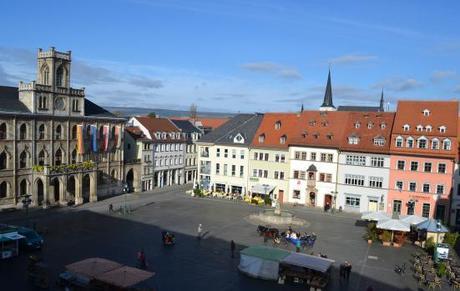
Berlin may be the heart of Germany’s cultural scene today, but Weimar was once one of Europe’s most important cultural centres. It’s the home of German Classicism, Bauhaus, and renowned figures, from Goethe and Schiller, to Liszt, Liebermann, Kandinsky, Klee, Feininger and Gropius.
In fact, so many famous people have ties to Weimar that it’s littered with signs like this:
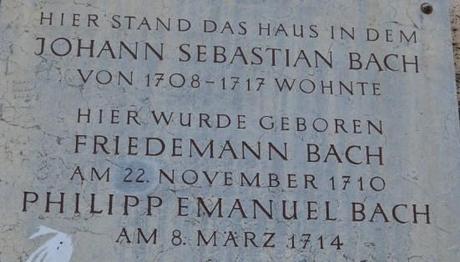
And this:
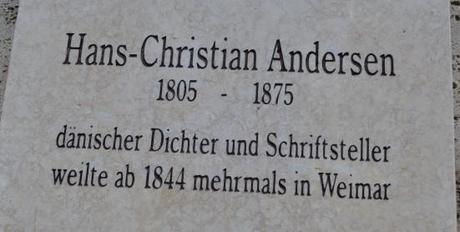
And you get the feeling that the Weimarians are simply showing off.
The most famous resident of Weimar was Goethe. There are so many references to him in the city that The Bavarian and I started playing the ‘Goethe-Game’, where you gained a point for screaming ‘Goethe’ every time you saw his face or name. (I would record the winner, but really, it’s the taking part that counts…)
Goethe’s Residence and the adjoining Goethe National Museum provide a fascinating insight into his life, work and ideas. He had many interests and collections – from Italian majolica to rocks – so there’s plenty to see.
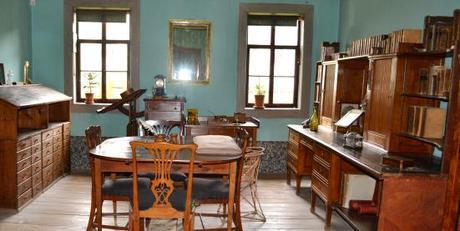
As we continued to walk around Weimar screaming ‘Goethe’, we saw Schiller’s residence, Goethe’s garden house, ate a traditional Thüringer Rostbratwurst at the market square (Markt) and enjoyed a coffee and cake at Cafe Frauentor.
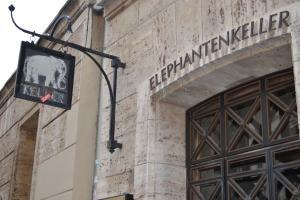
The Elephant is the place to stay in Weimar. It was established in 1696 and has a reputation for being a social and cultural meeting point for poets, artists and intellectuals. Thomas Mann immortalised the hotel in Lotte in Weimar and was a guest, as was Wagner, Feininger, Ahner and others.
Of course, that was why I wanted to stay at The Elephant. The Bavarian wanted to stay there because of the eggs – specifically the eggs in a glass. He had stayed at the Hotel Fuerstenhof in Leipzig once, which belongs to the same hotel group, and has been going on about eggs in a glass ever since. I had no idea what he was talking about, but when you’re married to a nutter, you learn to nod and not ask too many questions.
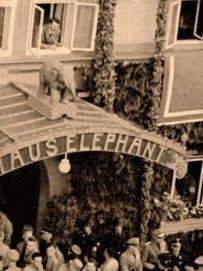
After dinner, we prowled the hotel floors examining the Baselitz and Liebermann prints on the walls, and the exhibition about the hotel’s history – where this photo of Hitler at The Elephant was displayed – on the first floor.
We stumbled across the suites – all named after esteemed guests – and discovered that a couple with a dog were staying in the Thomas Mann suite, sending The Bavarian on a tirade about how a dog had a better room than him, although he had to admit it was kind of fitting because Thomas Mann liked dogs.
I had to admit though, while sitting in front of my shrimp omelet topped with caviar and watching the Bavarian delicately spoon a soft-boiled egg covered with truffle foam from a little glass, that he was right about the breakfast.
- Satisfied? Will you stop going about eggs in a glass now? I asked.
- Yes. This is better than the other place – it’s a Wagenfeld glass. From now on, I will only talk of one egg, in a Wagenfeld glass.

The library houses an impressive collection focusing on German literature around 1800, and its Rococo Hall (right) is a UNESCO World Heritage Site. As well as old books, there are items from the library’s cabinet of curiosities, paintings and sculptures.
The last thing we did before catching our train back was visiting the Bauhaus Museum, which has a great collection of art and design works from the school, as well as information about its history and development.
If we had a little longer in Weimar, I would have liked to visit Buchenwald – a place of barbarism that followed the high point of culture in Weimar – as well as the Nietzsche Archive, Liszt House, the City Castle and the Bee Museum. I think all that calls for at least one more weekend trip to Weimar.
The Bavarian’s verdict: The egg was the best.
Filed under: art, Germany, history, Life in Berlin, Literature
